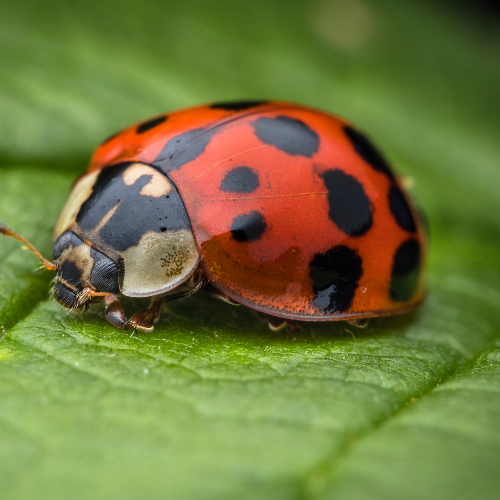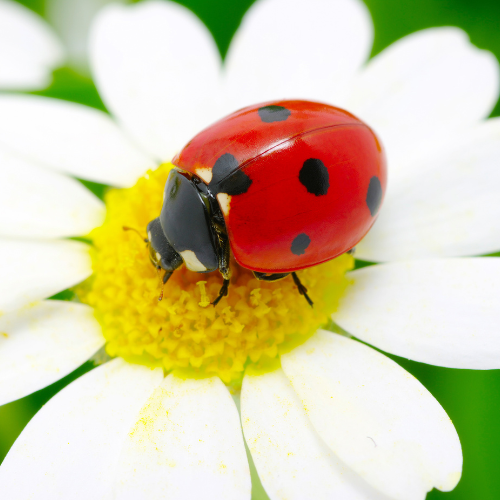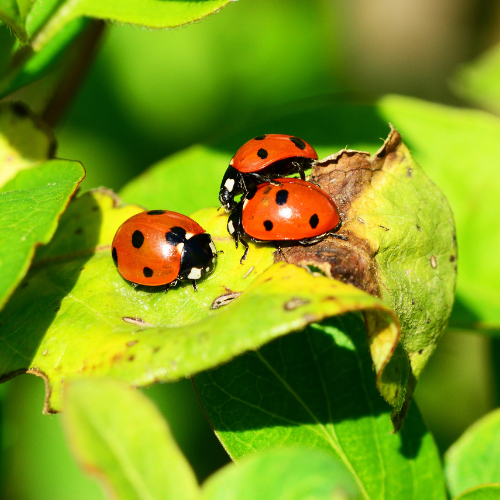Ladybugs
Introduction to
Ladybugs, also known as lady beetles or ladybird beetles, are beloved insects known for their bright colors and beneficial role in gardens. However, when they enter homes in large numbers, they can become a nuisance. This guide provides detailed information on how to recognize, understand, and manage ladybugs, including preventive measures and professional pest control solutions.
Recognition
Ladybugs are small, oval-shaped beetles, typically measuring between 1/16 to 3/8 inches in length. They are well known for their bright, colorful appearance, which can range from red to yellow with black spots on their elytra (wing covers). Some species may have no spots, while others have up to 20. The most common species in North America is the seven-spotted ladybug, which is red with seven black spots. Ladybugs also have short legs and antennae. Despite their varied appearance, they are easily recognizable by their distinctive, often brightly colored patterns.
Biology
Ladybugs belong to the family Coccinellidae and undergo complete metamorphosis, developing from eggs to larvae to pupae to adults. Females lay clusters of yellow or orange eggs on the underside of leaves near aphid colonies, which serve as food for the larvae. The larvae are alligator-shaped and often dark with bright spots or stripes. They feed voraciously on aphids and other soft-bodied pests, making them beneficial for natural pest control. After several weeks, larvae pupate and emerge as adults. Ladybugs have a lifespan of about one year, during which they may produce multiple generations.
Habits
Ladybugs are primarily active during the day and are known for their beneficial role in controlling garden pests like aphids, mealybugs, and mites. In the fall, they seek shelter to overwinter, often entering homes in large numbers. They are attracted to light-colored buildings and can squeeze through small cracks and crevices to get indoors. Once inside, they congregate in warm, sunny areas like windows and ceilings. Although they do not cause structural damage or reproduce indoors, their presence can be a nuisance, and they can release a yellowish, foul-smelling fluid when disturbed.
Prevention
Preventing ladybug infestations involves sealing entry points and reducing attractants. Inspect and seal cracks and gaps around doors, windows, and foundations to prevent them from entering. Use weather stripping and screens on doors and windows to block access. Consider using light traps to capture ladybugs indoors without harming them. Additionally, maintaining a well-sealed home and using yellow or sodium vapor lights outdoors can reduce the likelihood of attracting ladybugs. For those already inside, vacuuming them up and releasing them outdoors is an effective method.
Professional
When ladybugs become a persistent problem, professional pest control services can offer effective solutions. STL Pest Control provides comprehensive inspections and tailored treatment plans to address ladybug infestations. Their methods include sealing entry points, using non-toxic traps, and targeted treatments to eliminate existing ladybugs. Professional services ensure that the infestation is managed efficiently and safely, minimizing the inconvenience and potential distress caused by these pests.



Our Office









